Hot beverages are a staple of any c-store offering, but they’re not usually a popular choice for younger consumers. That may be about to change.
When consumers find their box of tea bags empty, or a jar of instant coffee with barely enough granules to make a gulp, they won’t be content to wait until their next big shop to replenish. They’ll don their coat and shoes and hotfoot it straight to the local shop to top up, making the hot beverages category an important one to get right.
But it’s not just a matter of knowing the best-sellers and facing accordingly for a successful hot beverages category; knowing your demographic is just as important if new research by YouGov SixthSense is anything to go by. The recent poll of UK adults reveals that a generational divide exists in coffee consumption, with 83% of over-55s having drunk a cup of instant coffee in the past month compared with 67% of 18- to 24-year-olds. And younger generations are more likely to choose alternatives such as cappuccino (43%), latte (39%) and Americano (22%).
James McCoy, research director for YouGov SixthSense, says: “What we are seeing here are two very different coffee drinking cultures informed by two different consumer experiences. The younger generation has grown up with Starbucks, Costa, Café Nero and so on, offering a more varied and comprehensive coffee menu. Also, young people are used to meeting with their friends at coffee shops where conversation can be carried out over a freshly brewed coffee Friends-style. The previous generation hosted at home more and therefore was more inclined to resort to whatever was in the kitchen cupboard if and when a guest requested coffee.”
Top 10 : Cup winners
1. Nescafé Original
2. Tetley bags
3. PG Tips bags
4. Nescafé Red Cup
5. Nescafé Gold Blend
6. Typhoo Bags
7. Tetley One Cup
8. Typhoo QT Instant
9. Yorkshire Tea bags
10. Douwe Egberts
Source: Kantar Worldpanel, independents & symbols
McCoy adds that Starbucks’ recent foray into the instant coffee market reflects an industry-wide push to produce something closer to the taste of freshly brewed coffee in instant coffee form. “It is possible that moves by coffee house chains into the instant sector might see a slight rebalance in favour of instant in the home.”
It’s not only the age of shoppers that influences product selection, but where they’re from. According to the YouGov research, Londoners exhibit a more discerning taste in coffee compared with drinkers in other parts of the UK, with 12% saying they drink freshly brewed coffee for breakfast during the week, compared to Wales (6%), the Midlands (5%) and Northern Ireland (1%). A smaller proportion of Londoners (69%) has drunk a cup of instant coffee in the past month than anywhere else in the UK, while the North (84%) is the region with the most drinkers of instant brands such as Nescafé and Kenco.
The hot beverages category in convenience stores is growing ahead of the total market with sales up 7.4% to just under £200m, compared with an increase of 6.5% to £1.5bn in total grocery, according to IRI data. Instant coffee makes up 47% of hot beverage sales in convenience stores, with sales of soluble coffee up by 3.3%, and premium soluble coffees up by 17%.
Graham Walker, trade communications manager at Nestlé, which produces the Nescafé brand, says: “Premium and super-premium brands are absolutely motoring in convenience. With the background of the economic situation you would think that people would be switching to cheaper brands, but we’re seeing the reverse of that with people wanting a higher quality coffee.”
Stock ideas: Give it a try
While looking at the top 10 best-sellers is a great starting point for ranging, Nestlé believes retailers should also ensure they have products from each segment and has come up with this alternative top 10 for convenience stores as a guideline:
1. Nescafé Original 100g 2. Tetley 80s
3. PG Tips 80s
4. Nescafé Gold Blend 100g
5. Cadbury Drinking Chocolate 250g
6. Nescafé Cappuccino sachets
7. Horlicks 300g
8. Nescafé Original Decaf 100g
9. Twinings Earl Grey tea 10. Nescafé Alta Rica 100g
When compared with cold drinks, the proportion of hot drinks consumed is also growing year on year, adds Walker. “More people are drinking hot beverages than ever before. We’ve seen premiumisation growing and we’ve also identified the importance of attracting younger consumers. Young consumers aged 34 or younger account for only 11% of hot beverage spend. The reason for this is that young people have seen drinking hot beverages as an aspirational rite of passage. They engage frequently in the out-of-home arena so there’s a huge opportunity for instant coffee to play a role in these people’s lives but it needs to be in a format that appeals to their lifestyles.”
It’s these younger consumers that Nescafé is targeting with the launch of its 3in1 product into the UK market. Nescafé Original 3in1sachets, which combine the coffee, milk and sugar in one pack, are available in single sachets with a rrp of 25p, specifically aimed at the convenience sector, and packs of 10 sachets with a rrp of £1.99.
Says Walker: “Nescafé Original 3in1 will invigorate the category with something different and exciting. It supports the growing trend for more convenient coffee formats for the no-hassle generation that can’t be bothered to get the coffee, sugar and milk in.”
Tea is still the best-seller when it comes to the hot beverages category, and sales of standard tea bags in the impulse channel are now worth £68.6m, growing by 14% year on year, according to AC Nielsen data. Tetley holds the number-one position in the convenience sector with £25.1m-worth of sales and growing by 9%, followed by PG Tips, which is worth £20.5m and growing by 12%. Private label comes third, closely followed by Yorkshire Tea, worth £5.3m in convenience and growing by nearly 11%.
Simon Attfield, customer marketing controller at Tata Global Beverages, which produces Tetley, says that convenience retailers need to ensure they are prepared for both distress and general convenient purchases. “There’s an opportunity for convenience stores to improve their total offering and open up the range with things like green tea and Earl Grey,” he says. “They need to offer more choice with a truly convenient range rather than just distress.”
This means not just offering a range of standard black teas, but also speciality teas such as green tea, herbal teas and red bush tea.
The hot beverages shopper is an important one because, according to shopper research company HIM’s Convenience Tracking Programme for 2010, the average hot beverages shopper spends £8.94, compared with £5.31 by the average convenience shopper not buying hot beverages. The average hot beverages shopper has 5.1 items in their basket, compared with only 2.7 from the general shopper, indicating that hot beverage shoppers are also buying into other categories such as milk, biscuits, frozen ready meals, news and household.
To make the most of this shopper, ranging and merchandising is key. Nestle’s Walker says: “The traditional barriers to shopper purchases are confusion and an unclear flow. People will often question if the outlet stocks hot beverages at all so range and merchandising is critical.”
Within coffee, Walker recommends that retailers stock a core range of 100g jars and merchandise them in their individual segments regular coffee, premium coffee, super-premium coffee and café-style coffees. According to IRI data, regular coffee accounts for 45% of all soluble coffee sales and premium makes up 34%.
17% - That’s the number of hot drinks shoppers who say they are buying more hot drinks now compared with a year ago, according to HUIM’s Convenience Tracking Programme
“We recommend using beacon brands in regular and premium coffee as a signpost for the segment and merchandise similar products adjacent to those,” says Walker. “Retailers can then start to build the rest of the range around that with some of the more developing segments such as super-premium and café-style.”
While it makes up only 8% of the market, the cafe-style segment remains an important developing one as consumers look to recreate the coffee shop experience at home. Stocking some of the same products they can buy in a coffee shop for a fraction of the price will encourage those shoppers onto the fixture.
Decaffeinated is also important, says Walker. “Decaf is still quite small, but all convenience stores should have at least one offering because decaf shoppers are quite specific. If the store doesn’t sell it, they will go elsewhere.”
As many shoppers struggle to get by in difficult financial times, so perceived value for money grows in importance. As such, many manufacturers are producing pricemarked packs to help retailers get the most out of their hot beverage sales.
Kraft Foods, for example, has pricemarked its 100g Kenco freeze-dried range of coffee. The Kenco Rich and Smooth variants are available in limited-edition £2 ‘special offer’ pricemarked 100g jars, compared with a rrp of £2.89. And for the first time, Kenco Decaf will also be part of the deal.
Steve Mounty, director of convenience and distributive at Kraft Foods UK and Ireland, says: “Pricemarked products give customers reassurance that they’re getting a good deal, which makes them more likely to pick up the product. The promotion will help convenience retailers to get even more value out of a strongly growing brand public data shows that the Kenco brand is growing at 8%. In challenging times, retailers need to concentrate on stocking products that continue to show strong growth.”
Pricemarked packs are also key to Taylors of Harrogate’s promotional plan for its Yorkshire Tea brand. John Sutcliffe, convenience sector manager for Taylors of Harrogate, says: “Pricemarked packs work well within the channel and we intend to maintain this strategy. The pricemarked packs cover our standard Yorkshire Tea range and also Yorkshire Gold.”
Nescafé is also pushing its 100g range with a £2.49 pricemark for Original, £2.89 for Gold Blend, and £2.39 for Nescafe Cappuccino. Says Nestle’s Walker: “Retailers love this because it offers value for money to the shopper, and shoppers love it because they feel they’re getting value for money.”
Top tips: Winter warmers
The food drinks market in convenience stores is now worth £14.8m, and when winter sets in sales of products such as hot chocolate go through the roof. Cadbury UK trade communications manager Susan Nash says: “If last winter is anything to go by, winter 2010 is set to be a strong year for hot chocolate. We have noticed a pattern of sales increasing if the outside temperature drops below 15°C, and a further sales spike when temperature drops below 7°C.
“Convenience retailers should make the most of this by ensuring they have good availability of the most popular products when the weather turns and the nights draw in.”
Winter 2009/2010 saw Cadbury hot chocolate grow by 4% and last month saw the brand revamped with new packaging and the addition of the Fairtrade mark. Fairtrade products are one of the strongest performers within hot beverages with sales of Fairtrade hot chocolate up 22%.
Down to a tea
If tea isn’t ranged and merchandised properly in your store, shoppers will simply go elsewhere. But help is at hand as Simon Atfield, customer marketing controller for Tata Global Beverages, offers the following advice to retailers:
1. Select the right brands and give enough space to tea. Understand your customers’ preferences because tea can be quite regional and you must ensure you are stocking the right brands.
2. Get the pack size right. For shoppers with an eye on bottom-line price, 40s are an important pack size, but do not shy away from the larger pack sizes of 80s and 160s. Although 160s sound like a large purchase for a shopper, they will last a family of heavy tea drinkers no longer than a week.
3. Give enough space to tea. Although everyday tea bags still deliver the vast majority of sales, go beyond stocking the top black tea brands. Your customers expect variety, so include a range of pack sizes and different types of tea such as black, extra-strong, peppermint, Earl Grey and green.
4. Keep an eye on stock levels. In convenience stores tea has historically been a distress purchase, but the recession is changing shoppers’ habits. By delaying the big weekly shop, there is an increase in top-up shopping with tea among the top three top-up items alongside bread and milk.
5. Benefit from complementary sales. Position tea next to complementary impulsive categories such as biscuits. Doing so can drive biscuit sales, too.
6. Demonstrate value for money. Promotions are an important driver of sales, so offer your consumers better value with pricemarked packs and packs offering extra free.
Retailer’s view: Mark Sullivan
“Hot beverages are doing very well. We are the only store within 500 yards in any direction that sells grocery. We are also near a university and students don’t mind paying that little bit extra, rather than do a supermarket shop. They buy a couple of items each day.
“Tetley tea 40s and Nescafé Original 100g are our best-sellers. We don’t sell so many of the larger pack sizes unless they are on promotion.
“Sales of filter coffee are going up as people start to treat themselves more. Sales of instant sachets have also risen. It’s not just the students buying; people will also take a sachet with them to work.
“We’re also seeing Fairtrade moving more steadily now.”
Mark Sullivan, Tates Spar, Aberystwyth
Read more
Focus On Hot Beverages - 11 September 2010





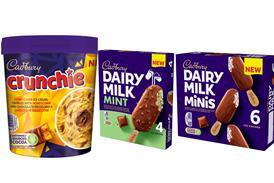
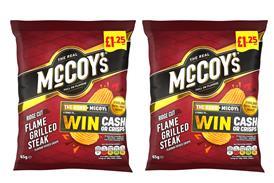
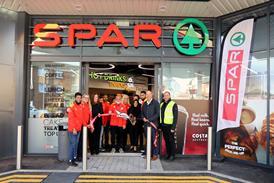
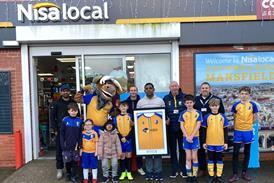













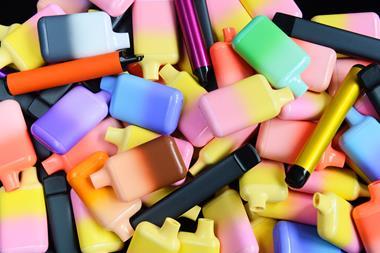





No comments yet